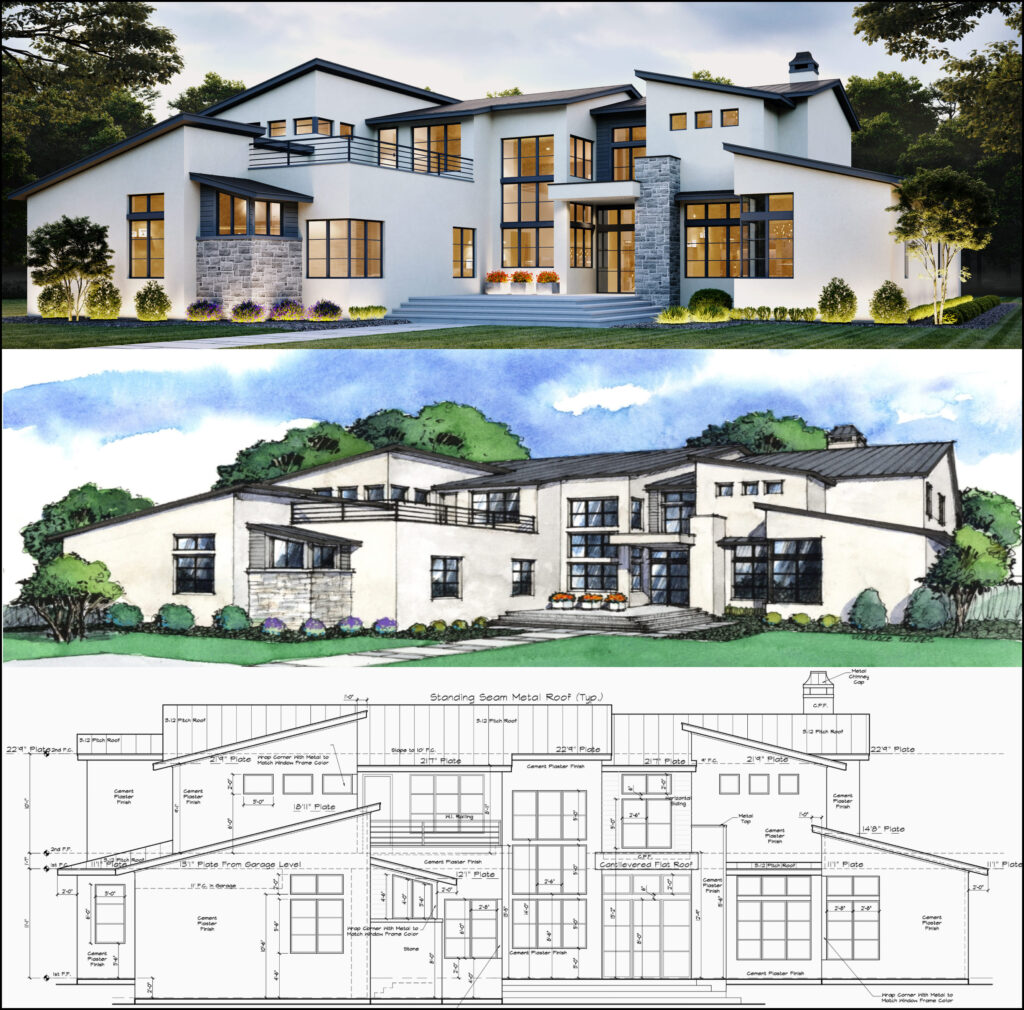Recognizing the Collaborative Refine In Between Designers and Engineers in Modern Construction Projects
The collaborative procedure in between designers and engineers is important in modern building and construction tasks, as it balances style intent with engineering usefulness. This collaboration not only influences the visual and practical aspects of a project yet likewise plays an important role in addressing sustainability obstacles. By utilizing effective interaction methods and leveraging advanced modern technologies, such as Structure Information Modeling (BIM), groups can work more cohesively. Nonetheless, the complexities of this collaboration usually existing unique obstacles that can impede progression. Exploring these characteristics reveals understandings that could significantly influence job outcomes and total industry criteria.
The Significance of Cooperation
The joint harmony between designers and designers is crucial for the successful awareness of any kind of building and construction project. This partnership brings with each other distinctive proficiency and point of views, making it possible for the assimilation of innovative design with useful design remedies. By interacting, architects and engineers can guarantee that a job not only satisfies visual and practical demands however additionally sticks to safety, sustainability, and financial restraints.
Cooperation cultivates a common vision, facilitating the placement of objectives and assumptions from the start. This placement is critical in resolving possible obstacles and mitigating dangers that might develop during the project lifecycle. A collaborative strategy permits for the effective allotment of resources, maximizing both time and price.
The value of collaboration extends to the repetitive process of design and building and construction, where responses from engineers can inform building decisions, leading to even more practical and sustainable layouts. On the other hand, architects can motivate engineers to think artistically about just how to accomplish structural honesty without compromising imaginative intent. Eventually, the collaborative partnership in between designers and engineers is not simply advantageous; it is basic to the development of top quality, useful, and innovative constructed atmospheres that fulfill the needs of culture.
Communication Methods and Tools
Efficient interaction methods and devices are important for cultivating collaboration in between engineers and engineers throughout the task lifecycle. Establishing clear channels of interaction is vital to make certain that all team members are straightened with project goals, timelines, and duties. Regular conferences, both in-person and digital, provide chances for stakeholders to review progress, address worries, and make educated decisions.
Using task monitoring software, such as BIM (Building Info Modeling) systems, boosts collaboration by allowing real-time sharing of style alterations and technological specifications. These tools help with openness, permitting engineers and designers to envision adjustments and analyze their effect on the general task.

Shared Goals and Task Vision

Establishing shared objectives involves open dialogue and a detailed understanding of each self-control's contributions. Designers commonly focus on style intent, spatial partnerships, and user experience, while designers stress structural stability, systems functionality, and conformity with regulations (cda architects). When these point of views are straightened, the result is a cohesive job that follows both creative goals and technological usefulness
Moreover, a well-defined job vision cultivates liability among employee, motivating each individual to take possession of their duty in attaining the wanted outcome. Regular check-ins and collaborative workshops can even more strengthen this dedication, permitting for changes to be made as the task advances. Ultimately, a shared vision not just enhances teamwork but also elevates the quality of the final deliverable, leading to successful project conclusion.
The Duty of Modern Technology
Leveraging innovation has actually come to be important in improving cooperation in between architects and engineers. Structure Details Modeling (BIM) stands out as a pivotal technology, enabling both designers and designers to develop detailed 3D models that encapsulate style intent and architectural honesty.
In addition, cloud-based platforms enable seamless partnership, enabling job stakeholders to gain access to and upgrade job information from anywhere. This cultivates a society of openness and liability, as adjustments can be tracked and assessed in real-time. In addition, mobile applications more boost interaction, giving on-site groups with prompt accessibility to task requirements and updates.
Arising modern technologies such as fabricated knowledge and artificial intelligence are additionally starting to contribute my site in predictive analysis, helping groups recognize prospective problems before they arise. Ultimately, the duty of modern technology in architecture-engineering partnership not only improves workflow performances but also boosts innovation, resulting in more effective job outcomes. By welcoming these technical improvements, architects and designers can make certain a much more cohesive and effective collective process throughout the building and construction lifecycle.
Situation Studies in Effective Partnerships
Numerous study illustrate the extensive impact of reliable partnerships in between designers and designers on job outcomes. One significant example is the see here cooperation on the High Line in New York City, where landscape engineers, engineers, and city coordinators collaborated to change an abandoned railway into a lively public park. This multidisciplinary approach not only boosted the aesthetic top quality but additionally ensured architectural safety and environmental sustainability.
An additional exemplary situation is the design and building of the Sydney Concert Hall. The partnership in between engineer JÃ ¸ rn Utzon and architectural designer Ove Arup exemplified ingenious analytic. Their collaboration enabled for the legendary shell-like design while attending to intricate engineering difficulties, eventually bring about a timeless architectural work of art.
The Burj Khalifa in Dubai better demonstrates the importance of collective initiatives. cda architects. The assimilation of architecture and engineering know-how enabled the project team to accomplish unmatched elevations while sticking to safety and security guidelines and visual vision
These instances emphasize the importance of communication, trust, and shared goals. In today's complicated building atmosphere, such collaborations are crucial to browsing obstacles and supplying tasks that fulfill both useful and visionary objectives.
Verdict
In verdict, the cooperation between architects and designers is vital for the success of modern-day building projects. Reliable communication techniques, a common job vision, and the assimilation of sophisticated technologies are critical elements that facilitate this collaboration.